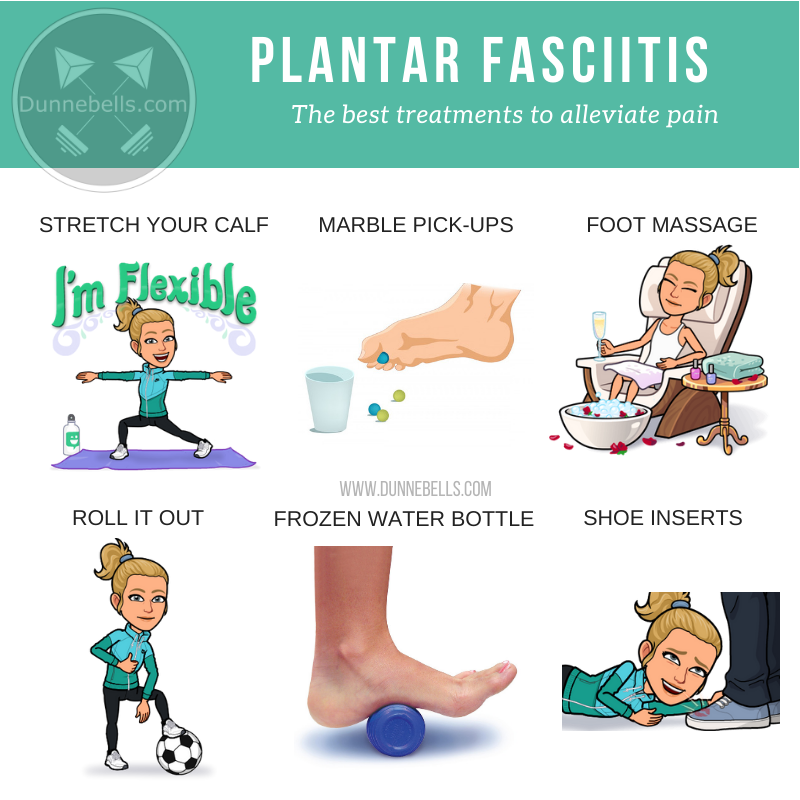6 surprising tips to help your plantar fasciitis struggles || Dunnebells
Chronic pain in the heels and pain that almost feels like an inflammation of the sole of your foot. This is the kind of pain someone suffering from plantar fasciitis will experience. This medical condition usually affects athletes with flat feet or overweight individuals who spend a lot of time on their feet. This chronic pain may take a few months to subside and eventually end. Home remedies can help the symptoms and struggle you may be experiencing from plantar fasciitis. You can perform a few exercises at home to relieve yourself from the pain.
Will plantar fasciitis go away on its own?
Plantar fasciitis can go away on its own, but it can take anywhere from 6 weeks to 12 months. To treat your plantar fasciitis, use any of the tips below.
If you ignore your plantar fasciitis, the inflammation and stress can result in small tears that can grow and cause more damage if not taken care of.
6 surprising tips to help your plantar fasciitis struggles:
1. STRETCH YOUR CALF MUSCLE
Tight muscles in the calf can increase the intensity of pain and make your plantar fasciitis even worse. Stretching the calf muscles can help relax them, eventually alleviating your pain. Here is how you can stretch your calf muscles to relax them:
Rest your hands against a wall
Bend the knee of the foot that is okay, straighten the leg of the foot that hurts
Ensure both feet are flat on the ground
Push into the wall, until you feel a stretch in the muscles of your heel and calf while doing this
Hold this position for 10 seconds at least
You can perform this exercise 2 to 3 times, depending on your body.
2. ROLL OUT YOUR FOOT
Loosening up the foot muscles can also help reduce pain. One way to achieve this is by placing a round and smooth object (like a ball) under your foot and by rolling it back and forth. You can find any round object lying around at home for this roll out your foot method or if you want something more specific for this move, you can pick up foot roller balls from sports stores. This is something you can do while sitting at your desk, watching TV, eating dinner or any other time where you have 2 minutes to sit comfortably and roll the round object under the arch of your foot.
3. MARBLE PICK-UPS (WITH YOUR TOES)
Another way to loosen your foot muscles and relax them which will help your plantar fasciitis is to pick up marbles off the ground with your toes. To do this, scatter 20 marbles on the floor and place a chair in the middle of the marbles. Sit on the chair comfortably, and begin picking up each marble one at a time with your toes and placing the marbles in a bowl on the ground near your chair. Repeat it as many times as you possibly can.
4. SHOE INSERTS
If you are someone who suffers from having a flat foot you will often suffer from plantar fasciitis too. This is because your arch lacks the support that your foot needs. The best way to tackle this issue is by getting shoe inserts or orthotics. These inserts help provide the extra arch that your foot needs. If you are someone who spends a lot of time on your feet and has a flat foot, these shoe inserts will be a game-changer for you. I recommend you consult a podiatrist before getting these shoe inserts.
5. FOOT AND LEG MASSAGE OR PHYSIOTHERAPY
Physiotherapy and massaging seem to be one of the most helpful ways to deal with plantar fasciitis. You can massage the arches of your foot to increase blood circulation and enhance relaxation.
6. FROZEN WATER BOTTLE ICING
You can give yourself some immediate relief to your plantar fasciitis pain by using a frozen water bottle to ice the bottom of your foot. Icing this part of your foot with a frozen water bottle relieves inflammation and helps reduce swelling as well. Ice constricts down the blood vessels in the area and will improve your blood circulation easing the pain temporarily.
How do I know if I have plantar fasciitis?
You may notice that pain in the morning is worse when you have plantar fasciitis. It will feel like throbbing pain at the bottom of the heel or the arch of the foot. Several people describe this pain as feeling like a bruise or an ache.
If you feel like you have plantar fasciitis resting is important to reduce swelling. Go and see your doctor, personal nutrition coach or physio if your pain is not bearable and these above tips do not improve your condition.
Be sure to join this free group BE THE FIRE FITNESS FAM full of fitness motivation, health and wellness resources, and one of the best supportive communities in the fitness space going around!
